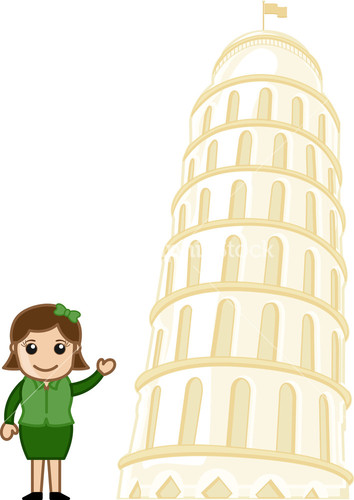
By 1990, it was leaning 5.5 degrees (or some 15 feet) from the perpendicular–the most extreme angle yet. Despite various attempts to reinforce it, Pisa’s tower continued to subside at a rate of some 0.05 inches per year, placing it in increasing danger of collapse. The tower was officially completed around 1370, but its lean only increased over the next six centuries, becoming an integral part of the monument’s quirky appeal. When construction resumed, chief engineer Giovanni di Simone tried to compensate for the lean by adding extra masonry to the short side, but the additional weight caused the structure to tilt even further. This delay allowed the foundation to settle further, likely prevented the bell tower’s premature collapse. Shortly after that, war broke out between Pisa and Genoa, another Italian city-state, halting construction for nearly a century. As a result, the structure had begun to tilt visibly toward the south. By the time builders had finished the third of eight planned stories about five years later, the tower’s foundation had begun to settle unevenly on the ground beneath it, a dense mixture of clay, sand and shells. In 1173, construction began on a white marble bell tower for the cathedral complex in Pisa, located between the Arno and Serchio rivers in Tuscany, central Italy. The so-called Leaning Tower of Pisa is one of the most famous buildings in the world, although maybe not for the reasons its original architects would have wanted.

Pick any day in the Piazza del Duomo in the Italian city of Pisa, and you will undoubtedly spot a bunch of tourists posing for the same photo: hands outstretched towards the cathedral’s conspicuously tilting bell tower, as if they are supporting it with their sheer strength.


 0 kommentar(er)
0 kommentar(er)
